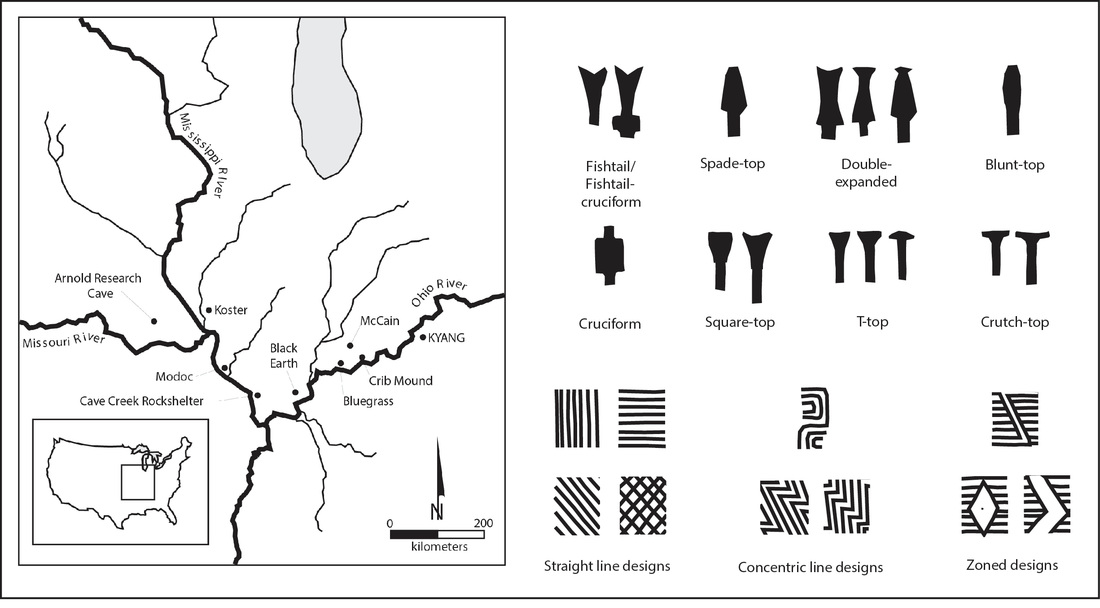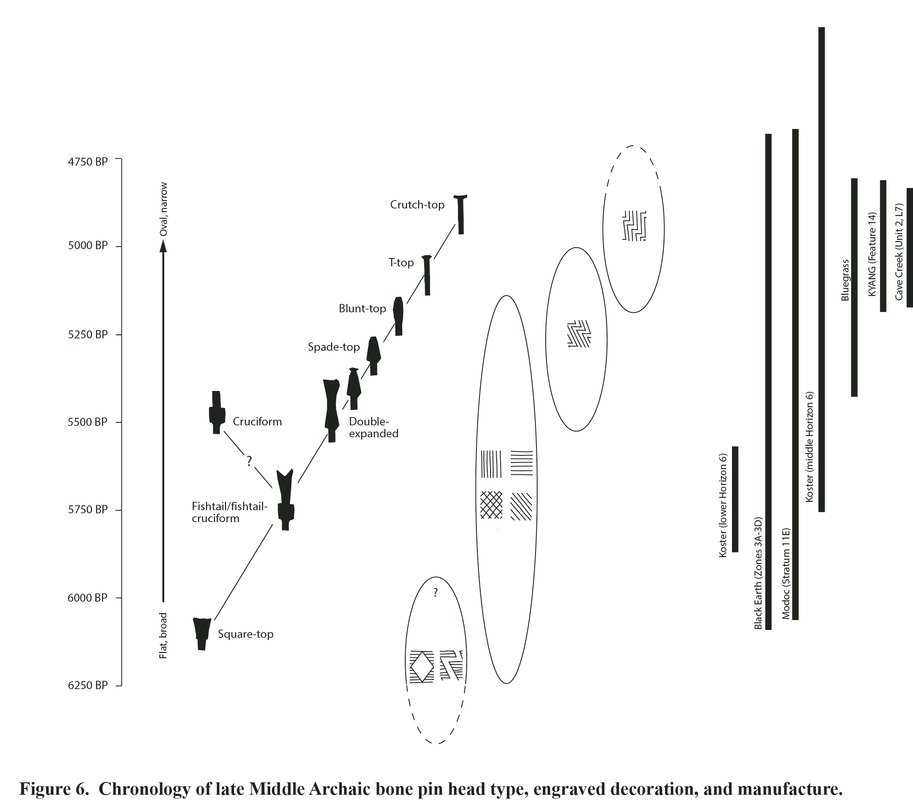The Eastern Woodlands is a big area, and I don't know any archaeologist who claims mastery of all of it. As far as the Archaic, the part I'm most familiar with probably remains the central Ohio Valley and the lower Great Lakes. I worked in southern, central, and northern Indiana for a total of nine or ten years, give or take, between the mid-1990s and 2006.
Among the broader inferences Jefferies was able to make with bone pin data is that the Ohio River was a definite boundary separating cultural traditions fully engaged in the production of bone items."
Based on what I did, I think there's a good case to be made that at least some of the variation in pin characteristics is temporal. I used combinations of head type and decoration to create a seriation of the bone pins. I combined the relative sequence suggested by the seriation with radiocarbon data to produce a chronology:
Carved bone pins were produced during the Middle/Late Archaic in several areas of the Eastern Woodlands, and there is significant variability both within and between these regions. This 2004 paper by Dick Jefferies ("Regional-Scale Interaction Networks and the Emergence of Cultural Complexity along the Northern Margins of the Southeast") discusses the Midwestern pins and others. Jefferies (2004:Figure 4.3) illustrates pins from the Savannah River region that appear (at least superficially) to share some design elements with pins from the Midwest. The Stallings Island pin assemblage appears to contain pins very similar to the crutch-top or t-top styles, which is interesting given the general time range of Stallings Island (ca. 4500-3500 BP?) relative to the late positioning of the style in my preliminary chronology from the Midwest (ca. 5000 RCYBP). I'll have to take some time to get caught up and go through the available data carefully and see if it's worth formally revisiting the issue of temporal variation in pin styles in the context of Sassaman's ideas about the Archaic.




 RSS Feed
RSS Feed
